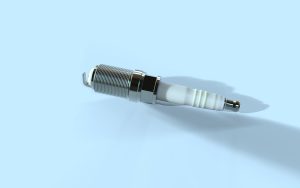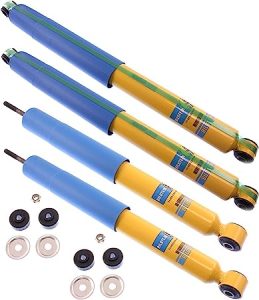The 2017 Silverado is a powerful and reliable pickup truck, but like any other vehicle, it can experience problems with its transmission. When faced with transmission issues, it’s crucial to identify the source of the problem so the correct solution can be found.
This blog post will discuss how to fix 2017 silverado transmission problems by outlining the possible causes and providing step-by-step solutions. We’ll also explain how understanding how transmissions work in general and how to identify common issues can help owners take proactive steps toward keeping their vehicles running smoothly. Let’s get started!
The transmission is an essential factor for vehicles since it transmits power from the engine to the wheels. It enables you to customize how much torque your engine delivers and manage your speed when driving. Unfortunately, transmissions can be vulnerable to a variety of problems, ranging from overheating and inadequate lubrication to low transmission fluid levels and worn gears.
Table of Contents
ToggleFrequently Encountered 2017 Chevy Silverado Transmission Problems:
First, let’s discuss the common transmission issues that Silverado owners may encounter. Some prevalent transmission concerns for the 2017 Silverado include rough shifting, delayed engagement, transmission slipping or grinding, and strange noises coming from the transmission. While some of these issues are minor and require only minor adjustments, others could indicate severe damage and necessitate more significant repair efforts.
Rough Shifting
One prominent issue with the 2017 Silverado is rough shifting between gears. This problem typically materializes as a difficulty in shifting from one gear to another, a jarring or jerking sensation when the vehicle changes gears, or a hesitation when trying to accelerate.
Rough shifting can be caused by a variety of factors, such as low transmission fluid, a worn clutch, or internal damage to the transmission itself. If you notice these signs, it’s crucial to address them early on to avoid long-term damage to your truck.
Delayed Engagement
Delayed engagement occurs when there is a noticeable delay between shifting your 2017 Silverado into drive or reverse and the actual engagement of the gear. This issue might be accompanied by a revving or buzzing sound from the engine as it waits for the transmission to “catch up.” Again, low chevy silverado transmission fluid, a failing clutch, or internal transmission damage could be at fault.
If you experience delayed engagement, it’s essential to investigate the symptoms and have your truck evaluated by a professional before any secondary damage occurs.
Transmission Slipping/Grinding
Transmission slipping refers to when the engine is revving, but it is not translating to the wheels, causing a momentary loss of power or acceleration. On the other hand, you may also experience grinding when shifting gears, which may be felt or heard while driving. These symptoms could point to worn or damaged internal components such as gears, clutches, or torque converters.
They might also be caused by a software issue in the truck’s computer system. Addressing slipping or grinding promptly is vital to prevent further damage to your entire powertrain.
Strange Noises
Another potential indicator of troubles in a 2017 silverado 1500 transmission is the presence of odd sounds coming from the area around the gearbox. Such noises could include whining, buzzing, or clunking sounds, and they may intensify as the vehicle moves through its gears.
Like the issues mentioned above, these sounds may signal low fluid levels, internal damage, or breakages within the transmission. They could also signify a failing transmission pump or worn seals. Regardless, strange noises should not be ignored and warrant further investigation.
Causes of 2017 silverado transmission problems
Before we explore solutions to the common transmission issues, let’s investigate what could be causing them.
Overheating and Inadequate Lubrication
Potential problems with the 2017 Silverado transmission can stem from overheating or inadequate lubrication. The transmission is designed to operate within a specific temperature range, and overheating can cause damage to various components, including seals, gaskets, and clutches. Inadequate lubrication can also cause excessive wear on these components, necessitating early replacement or potential failure. Regularly checking your transmission fluid levels and following recommended maintenance procedures can help keep your Silverado running smoothly.
Clogged or Damaged Filters
Another common cause of Silverado transmission issues is a clogged or damaged filter. The filter’s job is to remove contaminants from the transmission fluid before it’s recirculated through the system. If the filter becomes clogged, the fluid can’t flow correctly, causing a loss of hydraulic pressure and resulting in impaired functionality. Regularly replacing your transmission filter can help prevent this problem, ensuring your Silverado stays on the road.
Failed Solenoids/Valves
Solenoids and valves play an essential role in controlling the flow of fluid through your Silverado’s transmission system. When functioning correctly, they help ensure smooth gear shifts by regulating the pressure in different parts of the transmission. However, due to wear and tear, solenoids and valves can fail, causing issues like erratic shifting, slipping gears, or a complete loss of gear engagement. It’s essential to address these issues as soon as possible to prevent further damage to your transmission.
Low Transmission Fluid Levels
Low transmission fluid levels can lead to a host of issues for Silverado owners. As mentioned previously, insufficient fluid levels can result in inadequate lubrication, leading to overheating and component wear. Additionally, low fluid levels can cause a reduction in hydraulic pressure, which is necessary to apply the clutches and shift gears smoothly. It’s essential to check your transmission fluid levels regularly and top them off if necessary.
Worn Gears, Bearings, and Clutches
Like any mechanical system, the components in your 2017 Silverado’s transmission will wear over time. Gears, bearings, and clutches are particularly susceptible to wear and may need to be replaced periodically. If these components become excessively worn, they may no longer engage correctly, leading to slipping or grinding gears and other transmission issues. Regular maintenance and timely replacement of worn components can help ensure your Silverado’s transmission performs optimally.
Also Read: How Do You Know If Your Tranmission Is Going Out?

Step-by-Step Solutions for Fixing
Problems
Now that we’ve discussed the potential causes, let’s look at how to fix 2017 Silverado transmission problems. Depending on the issue, there are a few different approaches you can take to fix your Silverado’s transmission problems.
Check the Transmission Fluid Level
The first and most straightforward fix to any transmission problem is to check the fluid level. Low or dirty fluid can cause shifting issues, grinding noises, and even complete transmission failure. To check the fluid in your 2017 Silverado, make sure the vehicle is on level ground, and the engine is warm. Locate the transmission dipstick (check your owner’s manual if you’re unsure), pull it out, wipe it clean, and then reinsert it to check the fluid level. If it’s low or appears dirty, you may need to top it off or perform a complete fluid change.
Replace Clogged or Damaged Filters
A clogged or damaged transmission filter can cause poor shifting performance and even lead to transmission failure. To remove and replace the filter, you’ll first need to drain the transmission fluid. Once that’s done, locate and remove the filter (again, check your owner’s manual for the exact location). Replacing the filter should be as simple as removing the old one and installing a new one in its place. After that, refill the transmission with the proper fluid.
Replace Faulty Solenoids and Electrical Components
Faulty solenoids and electrical components can lead to a variety of transmission issues, including erratic shifting and slipping between gears. If your Silverado is experiencing these issues, it’s worth checking the wiring and connections associated with your transmission’s solenoids. If you discover damaged or corroded connections, they can usually be replaced relatively easily. Similarly, if you can locate a faulty solenoid, you can order a replacement and swap it out.
Repair or Replace Worn Gears, Bearings, or Clutches
Worn gears, bearings, or clutches can cause your transmission to slip or fail to engage altogether. If you suspect that your Silverado has worn transmission components, it’s best to consult with a professional mechanic to assess the severity of the problem. In many cases, replacing these components may require specialized tools and extensive knowledge of the transmission system. If it turns out that you do need to replace these parts, be sure to source high-quality OEM components to ensure the longevity of your repair.
Inspect the Cooler Line for Blockages
The transmission cooler line helps to maintain a consistent temperature within your Silverado’s transmission system. If the cooler line becomes blocked or clogged, it can lead to overheating and severe transmission damage. To inspect your cooler line, start by locating it and checking for any visible damage or buildup. If you find any blockages or excessive debris, it’s essential to clean or replace the cooler line as needed.
Add Supplemental Lubrication to Reduce Heat Buildup
Finally, adding supplemental lubrication to your Silverado’s transmission can help to reduce heat buildup and improve overall performance. There are a variety of transmission additives and treatments on the market that can be utilized in your Silverado. These additives can help to prolong the life of your transmission, allowing it to run cooler and more efficiently.

What are the DTC codes related to the 2017 Silverado 1500 transmission problems?
DTC stands for Diagnostic Trouble Code. This code is used by mechanics to detect and diagnose any problem areas with your car’s system or component. These codes are read out by an onboard diagnostics scan tool, which many garages use when servicing vehicles. The scan tool reads out the code so that mechanics can interpret the meaning of it and diagnose the issue accordingly. Knowing this information before getting into a mechanic’s shop can save you time, money, and frustration!
P0751
Shift Solenoid A Performance/Stuck Off: The shift solenoid is responsible for controlling the gear shifting process on an automatic transmission. When this code appears, it indicates that there is an issue with the shift solenoid A. It could be stuck off or otherwise not performing correctly. To diagnose this problem properly, you will need to check for any debris in the valve body of the transmission and inspect all electrical connections. You may also need to replace the shift solenoid itself if necessary.
P0755
Shift Solenoid B Performance/Stuck Off: This code is similar to P0751, except it pertains to shift solenoid B rather than A. As with P0751, you will want to check for any debris in the valve body of the transmission and inspect all electrical connections before replacing the shift solenoid itself if necessary.
P0760
Shift Solenoid C Performance/Stuck Off: Once again, this code pertains to a faulty shift solenoid, but this time it’s C instead of A or B. The same steps outlined above can be used for diagnosing and repairing this issue as well; however, some additional testing may be required depending on the specific symptoms your vehicle is showing.
P0765
Shift Solenoid D Performance/Stuck Off: This code indicates an issue with shift solenoid D and should be treated similarly to those above; however, note that some additional testing may be required depending on your vehicle’s symptoms.
P0894
Transmission Component Slipping/Gear Ratio Error: This code indicates a slipping condition within one or more components inside your vehicle’s transmission system or a gear ratio error between two gears in the transmission system itself. To address the issue, it’s necessary to identify if any of the components are slipping or malfunctioning and replace them immediately. Furthermore, even if no parts appear faulty, a software update may still be needed in order for your car’s computer system to recognize post-repair changes. Taking these steps will ensure that further damage does not occur.
Also Read: Chevy Silverado 1500 years to avoid
Prevention and Maintenance Tips
Once you’ve addressed the issue and made repairs as needed to your 2017 Silverado 1500 transmission, it’s crucial that you take steps to prevent similar problems from occurring in the future. Here are some top tips that you can use to ensure the longevity of your transmission:
Have the transmission serviced regularly
Having your transmission serviced on a regular basis is a surefire way of keeping it in optimal condition. Most mechanics and experts recommend a service interval of around 30,000 to 60,000 miles. This typically involves flushing out the old transmission fluid, replacing the transmission filter, and adding new fluid to the system. Regular servicing ensures that any potential issues are discovered and addressed in a timely manner, preventing them from escalating into major and costly problems.
Inspect external parts often for any signs of damage or wear
It’s vital to be proactive when it comes to inspecting the external parts of your transmission system. Make sure to frequently check for any signs of damage or wear, such as leaking or cracked hoses, loose connections, or worn seals. By spotting these issues early on, you can have them repaired before they lead to more significant problems down the road. Additionally, paying close attention to how your transmission feels and sounds while driving can also help pinpoint any potential concerns.
Check fluid levels on a monthly basis and top up when necessary
Transmission fluid is the lifeblood of your Silverado’s transmission system. It keeps the moving parts lubricated and cool while preventing wear and tear. To ensure the health of your transmission, be sure to check the fluid levels regularly—at least once a month. If you notice that the fluid levels are low, make sure to top it up with the appropriate type of fluid specified by your vehicle’s manufacturer. Also, pay attention to the colour and smell of the fluid; a burnt smell or dark, dirty appearance may indicate the need for a fluid change.
Avoid towing heavy loads with your Silverado truck
While your Silverado may be a powerful and capable towing machine, consistently hauling heavy loads can strain your transmission over time. If you frequently tow large or heavy trailers, consider investing in a truck specifically designed for heavy towing to protect your Silverado’s transmission. However, if you still need to tow with your truck, be mindful of its towing limitations and follow the manufacturer’s guidelines for loading and towing capacities.
Ensure the drive belt and clutch are in good condition
The drive belt and clutch are two components that have a direct impact on your truck’s transmission. A worn or failing drive belt can lead to diminished performance, while a faulty clutch can affect gear shifting and overall drivability. Make sure to inspect your drive belt for any signs of wear, such as cracks or fraying, and replace it as needed. Additionally, pay attention to any changes in the feel or performance of your clutch and consult a mechanic if you suspect an issue.

FAQs
How Many Quarts of Transmission Fluid Chevy Silverado 1500 Requires?
The amount of transmission fluid that your Silverado 1500 requires depends on the model year. For 2017 models, it is generally recommended that you use six quarts of Dexron III transmission fluid. However, for best results, consult your owner’s manual or a certified mechanic for the exact specifications and requirements for your specific vehicle.
Can a Bad Ground Cause Transmission Problems?
Yes, a bad ground can cause various transmission issues. A weak or loose connection between the battery and the engine can lead to engine misfires, erratic shifting, and rough gear changes. To avoid this, be sure to check all the ground connections in your truck’s electrical system on a regular basis.
What are Transmission Pump Failure Symptoms?
Some of the most common signs of a failing transmission pump include loud noises, difficulty shifting gears, and slipping between gears. If you experience any of these symptoms, have your transmission inspected as soon as possible to prevent further damage or expensive repairs.
How much 2017 Silverado Transmission Replacement Cost?
The cost of a transmission replacement can vary depending on the make and model. For the 2017 Silverado, the range is typically between $2,400 and $3,000. However, this amount may fluctuate depending on how much labour is involved in the repair and any additional parts that need to be replaced.
Conclusion
Tackling how to fix 2017 Silverado transmission problems can be daunting, but with the right advice and maintenance practices, you can ensure your truck runs smoothly for years to come. Remember to always check the fluid levels regularly, avoid excessive towing, inspect the drive belt and clutch, and make sure all ground connections are secure. If you experience any symptoms of transmission failure, consult a certified mechanic right away. With the proper care and maintenance, your Silverado will continue to provide you with reliable transportation for years to come.







